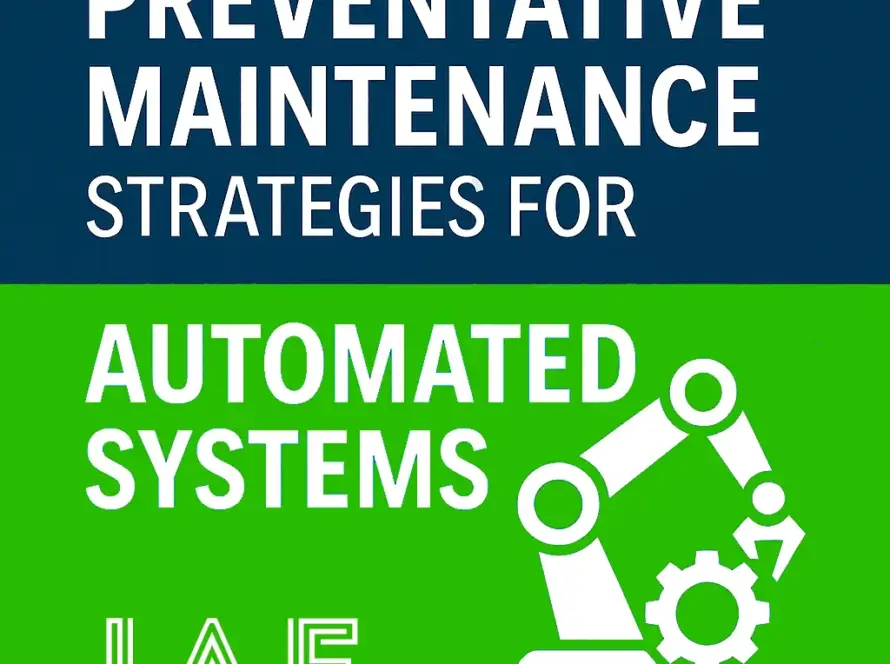In automation projects, successful delivery doesn’t end with installation—it begins with a structured and essential step: the commissioning process in automation projects. This crucial phase ensures that systems work safely, efficiently, and exactly as intended.
At IAE Contractors, we consider commissioning not just a milestone, but a cornerstone of every successful automation project.
What Is the Commissioning Process?
The commissioning process is a structured approach to verifying that all components of an automation system—hardware, software, and interfaces—operate as intended under actual working conditions.
It is a formal, documented process that bridges the gap between construction and operational readiness. Unlike simple startup or installation, commissioning includes system validation, functional testing, safety checks, and handover documentation.
Key Stages in the Commissioning Process in Automation Projects
1. Pre-Commissioning
Before any live power or process begins, our team performs:
- Wiring and cable continuity checks
- Calibration of instruments
- I/O validation
- Mechanical inspections
- Firmware and software updates
2. Cold Commissioning
Dry tests of automation logic, interlocks, alarms, and communication interfaces—without involving the actual process flow.
3. Hot Commissioning
Systems are powered up and operated with actual materials, loads, and environmental conditions.
4. Performance Testing
Full-capacity tests simulate real-world operation to validate the system’s ability to meet contractual KPIs, safety limits, and functional specs.
⚙️ Planning a new automation system?
Let’s discuss your commissioning needs
Why Is Commissioning So Critical?
Proper commissioning provides:
- ✅ Early detection of faults or integration errors
- ✅ Functional and safety assurance
- ✅ Documentation for regulatory bodies
- ✅ Smoother client handover and acceptance
- ✅ Long-term operational stability
🛠️ The cost of skipping commissioning? Delays, breakdowns, and rework.
Who’s Involved in Commissioning?
- Automation Engineers: Test PLCs, SCADA, and control logic
- Electrical Technicians: Ensure safe power and signal integrity
- Mechanical Teams: Check alignment and installation
- End Users / Clients: Validate that all requirements are met
At IAE Contractors, we coordinate all parties to ensure seamless execution and reliable results.
Final Thoughts
Understanding and executing a proper commissioning process in automation projects helps prevent costly failures, ensures compliance, and guarantees long-term operational success.
It’s not an afterthought—it’s your assurance of readiness.
In automation projects, successful delivery doesn’t end with installation—it begins with a structured and essential step: the commissioning process in automation projects. This crucial phase ensures that systems work safely, efficiently, and exactly as intended.
At IAE Contractors, we consider commissioning not just a milestone, but a cornerstone of every successful automation project.
What Is the Commissioning Process?
The commissioning process is a structured approach to verifying that all components of an automation system—hardware, software, and interfaces—operate as intended under actual working conditions.
It is a formal, documented process that bridges the gap between construction and operational readiness. Unlike simple startup or installation, commissioning includes system validation, functional testing, safety checks, and handover documentation.
Key Stages in the Commissioning Process in Automation Projects
1. Pre-Commissioning
Before any live power or process begins, our team performs:
- Wiring and cable continuity checks
- Calibration of instruments
- I/O validation
- Mechanical inspections
- Firmware and software updates
2. Cold Commissioning
Dry tests of automation logic, interlocks, alarms, and communication interfaces—without involving the actual process flow.
3. Hot Commissioning
Systems are powered up and operated with actual materials, loads, and environmental conditions.
4. Performance Testing
Full-capacity tests simulate real-world operation to validate the system’s ability to meet contractual KPIs, safety limits, and functional specs.
⚙️ Planning a new automation system?
Let’s discuss your commissioning needs
Why Is Commissioning So Critical?
Proper commissioning provides:
- ✅ Early detection of faults or integration errors
- ✅ Functional and safety assurance
- ✅ Documentation for regulatory bodies
- ✅ Smoother client handover and acceptance
- ✅ Long-term operational stability
🛠️ The cost of skipping commissioning? Delays, breakdowns, and rework.
Who’s Involved in Commissioning?
- Automation Engineers: Test PLCs, SCADA, and control logic
- Electrical Technicians: Ensure safe power and signal integrity
- Mechanical Teams: Check alignment and installation
- End Users / Clients: Validate that all requirements are met
At IAE Contractors, we coordinate all parties to ensure seamless execution and reliable results.
Final Thoughts
Understanding and executing a proper commissioning process in automation projects helps prevent costly failures, ensures compliance, and guarantees long-term operational success.
It’s not an afterthought—it’s your assurance of readiness.
⚡ Ready to deliver performance you can prove?
Talk to IAE Contractors today


